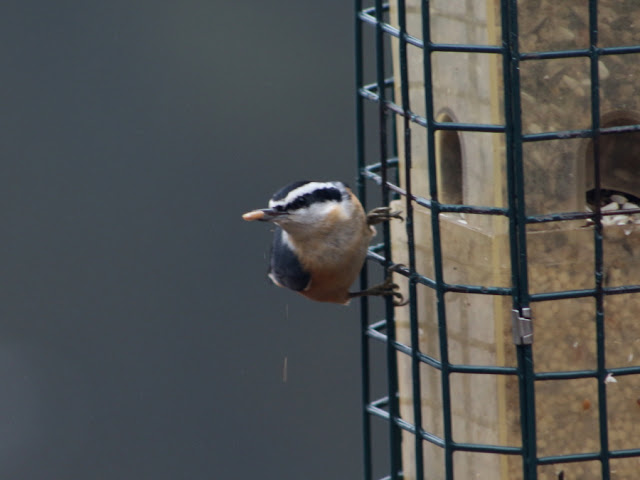Every year the freezing of Lake Wicwas takes a somewhat different path, and like everything else in 2020, this year it's been unusual. Old Man Winter has made several attempts to seize the lake, but each time he has surrendered to the advances of warmth and wind. Temperatures dipping just below freezing over night and then rising into the high 30s during the day have caused a back and forth cycle for days.
 |
| Over night the ice tries once again to capture the lake. |
Some days we watch the ice spread across the cove in the morning before the sun heats the day up, and then starting mid-morning we watch it creep back to open up the cove again.
Yesterday there was an unusual situation where ice had formed out towards the center of the lake but large areas near shore were left open - just the opposite of the usual pattern.
Perhaps the flow of water from last week's rain is keeping the lake a bit warmer and in motion where the streams enter along the shore.
Those streams are still running strongly enough to throw up water on their banks to create some interesting ice formations.
 |
| The stream under the bridge at the Hamlin trailhead. |
One cold night a stiff wind blowing across the lake generated waves which splashed up on the shore and formed another version of icicles: smooth, rounded crystal balls dangling from branches.
 |
| Wind-blown icicles on the shoreline. |
 |
| A chick-a-dee and a tufted titmouse share the feeder. |
 |
| A red-breasted nuthatch selects a choice seed. |
And soon enough the squirrels will come, followed perhaps by my favorite feeder-stalker, the bobcat - maybe we'll we get a sighting this winter. When the lake finally does freeze over we may get to see the red fox treading carefully across the thin ice, but not yet!
 |
| The fox is much too smart to traverse this ice. |




No comments:
Post a Comment